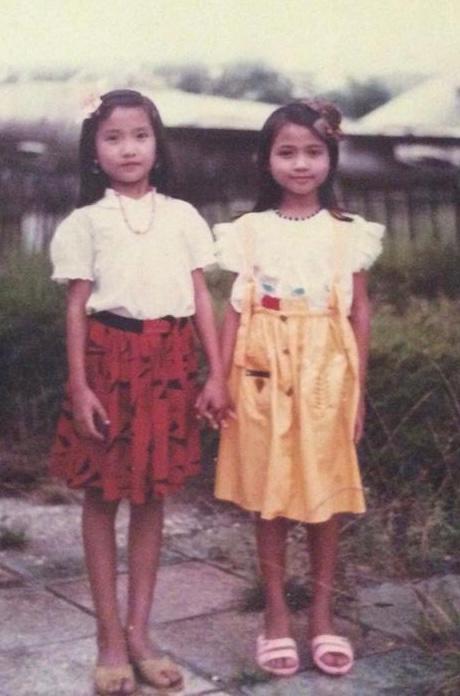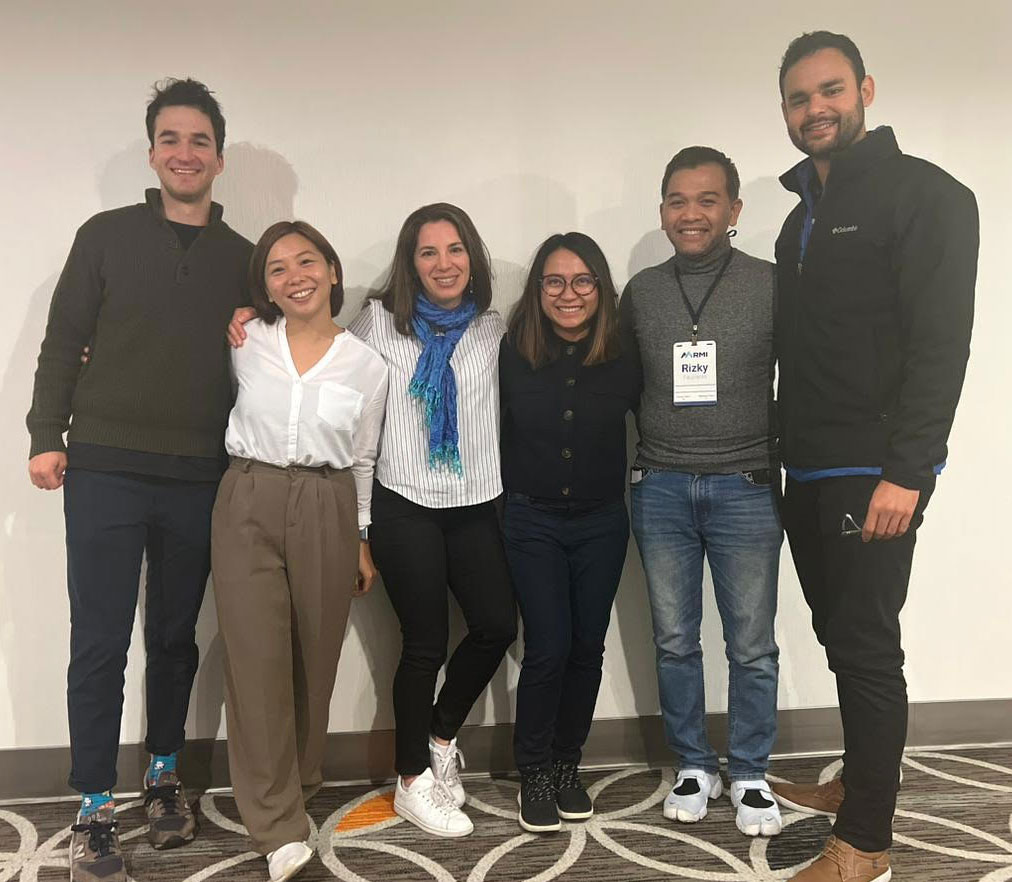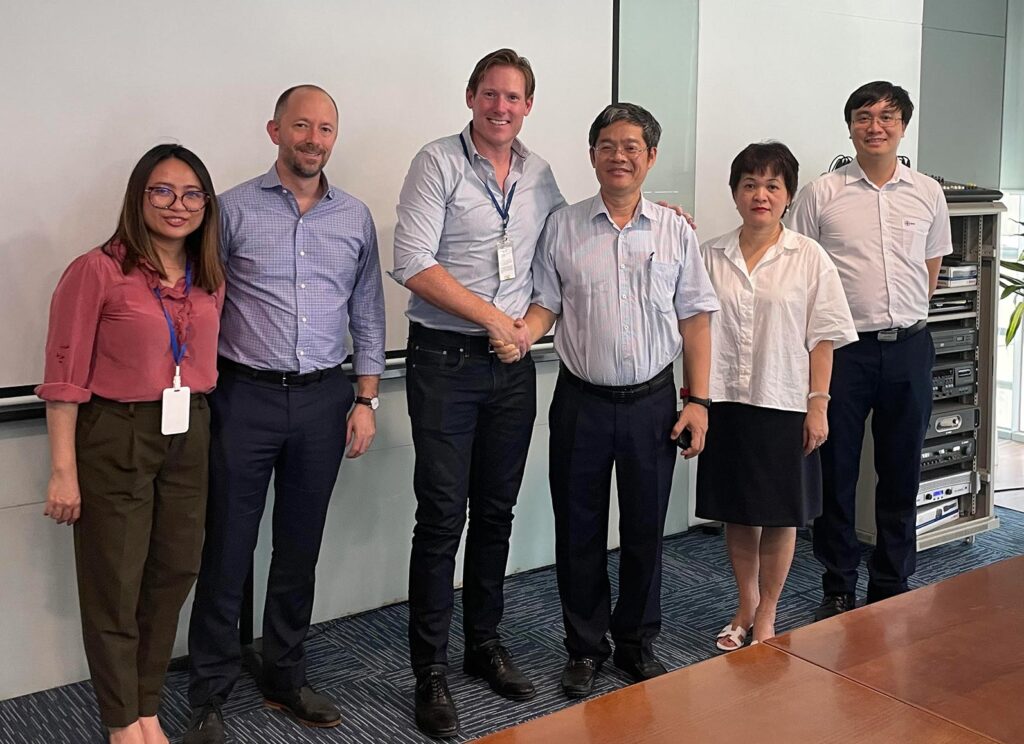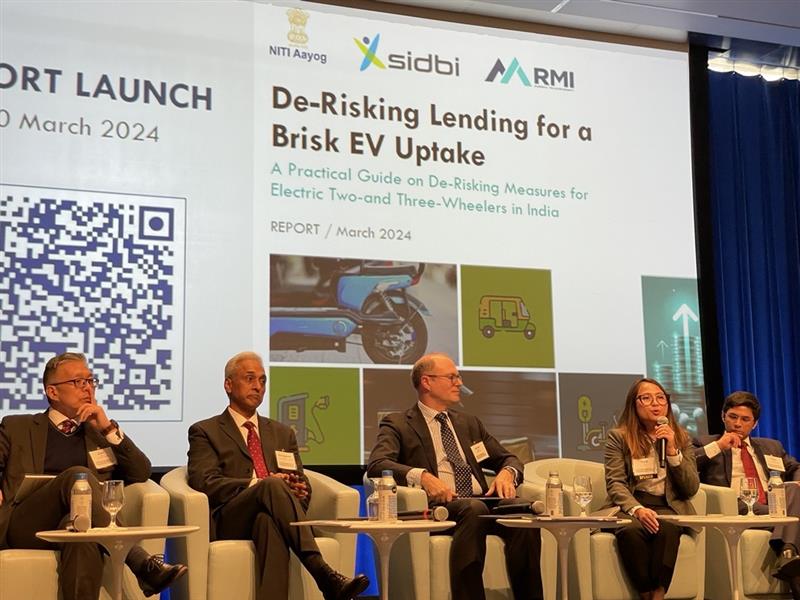
Thanh Ha: From Vietnam’s Coast to A Leader in Green Steel
How childhood experiences in coastal Vietnam shaped an RMI manager’s mission to decarbonize the steel industry and accelerate the energy transition in her home country.
Growing up in Nghê An Province, a small coastal town in north-central Vietnam, Thanh Ha developed an early appreciation for nature. As the youngest of four siblings, Ha has vivid memories of following her older brothers and sister to the beach to search for food — catching clams, fishing, and foraging for vegetables in the nearby woods.

Thanh Ha (on the right) and her cousin, Linh Nguyen, pose for a picture, Nghe An, 1991.
“We were just recovering from the war,” Ha recalls of her early childhood in the late 1980s following the Vietnamese Civil War. “We were at the tail end of the food stamp period. There wasn’t enough food, so my siblings were always out looking for whatever we could find.”
Her family home was situated right along the coast, with just a road separating their family from the East Sea of Vietnam. This proximity to the ocean left a lasting impression on young Ha. “I’ve always felt very peaceful being around nature and animals,” she says. Her father shared this love of the natural world, and Ha fondly remembers spending hours watching wildlife documentaries with him on television.
But life by the coast also meant confronting the harsh realities of climate variability and natural disasters. Every year during the rainy season, Ha’s family had to evacuate due to severe flooding. She describes returning after the water had receded to find their house filled with mud and fish swimming in their yard. The flooding was so routine that Ha now has no baby pictures — they were all destroyed by water damage over the years.
A Philosophy Degree Meets a Passion for Sustainability
This early environmental ethic stayed with Ha as she pursued her education. At 17, she left Vietnam to finish high school in Canada. After graduating, she spent a year volunteering in Ethiopia teaching English before moving to the United States to attend Westminster College in Missouri.
Ha studied philosophy as an undergraduate, drawn to existentialist thinkers as she grappled with questions of religion, meaning, and identity. Looking back, she thanks her philosophical studies for providing a strong foundation in logic and problem-solving that would serve her well in her future career.
“After college, I felt very disconnected from Vietnam after so many years abroad. I felt like there was a lot I didn’t understand about my home country,” she recalls. “So, I wanted to go back to ground my perspective and understand how the world there really worked.” She returned home after graduating and spent four years working in the private sector, gaining practical business experience and reconnecting with her roots.
But her passion for sustainability and the environment remained. “I decided I had learned what I wanted to in the private sector, and I knew that I really wanted to get into the environment and sustainability space. So, I moved to the Netherlands to earn my Master’s degree in sustainable development at Utrecht University.” This academic experience, combined with her recent industry experience, set her on the path to a robust career in climate and energy policy.
Ha’s Path to RMI
Ha’s professional journey in the sustainability field following her master’s degree began at the World Resources Institute in Washington, D.C. From there, she moved to the World Bank, where she spent three years working on environmental and energy projects.

Thanh Ha, third from the right, with her colleagues from the Southeast Asia Program, Denver, Colorado, 2023.
Seeking a more dynamic work environment, Ha joined RMI in 2022. She was drawn to RMI’s entrepreneurial culture and the opportunity to help provide her perspectives to the newly launched Southeast Asia initiative. “What I understood from RMI was that if you had a good idea, you could implement it,” she says, “That was one of the biggest selling points for me.”
What I understood from RMI was that if you had a good idea, you could implement it. That was one of the biggest selling points for me.
At RMI, Ha initially focused on clean energy development in Vietnam. “I was so excited to join an organization launching clean energy efforts in my communities. I really wanted the opportunity to do something for my country.” At the time, Vietnam had recently experienced a boom in solar energy installations, creating exciting momentum for renewable energy growth.

Thanh Ha, furthest to the left, alongside RMI’s Global South leadership team and local partners, Hanoi, 2023.
I was so excited to join an organization launching clean energy efforts in my communities. I really wanted the opportunity to do something for my country.
The Green Steel Revolution
In May of 2024, Ha transitioned from the Southeast Asia program to RMI’s Climate-Aligned Industries team, where she focuses on decarbonizing the steel industry in the United States.
Steel, a central component of our modern infrastructure from skyscrapers to wind turbines, poses a significant challenge to global climate goals. “This environmental toll stems primarily from iron ore-based production which relies heavily on coal-intensive processes,” Ha explains. While using scrap metal can offer a cleaner alternative to iron, the world’s demand for steel far outcompetes the availability of recycled materials.
“The US steel industry has been historically concentrated in the Great Lake and Midwest areas, so our team is making use of geographic-specific levers (economic, environmental, and social) to push for the transition of emissions-intensive and heavily polluting steel mills.”
Ha’s work involves two main tracks: accelerating the transition of highly polluting blast furnaces and establishing green iron corridors to produce cleaner green hydrogen-based iron to decarbonize global steel production.
“RMI is addressing both supply and demand. On the supply side, we’ve done extensive modeling to identify regions with abundant renewable energy and iron ore resources where producing green iron could be very cost-competitive,” Ha explains. “On the demand side, we are working to aggregate corporate commitments to purchase clean steel products through RMI’s Sustainable Steel Buyers Platform.”
If these initiatives make headway, Ha’s team could be industry leaders in shifting steel away from its current positionality as the single largest industrial emitter, currently accounting for a staggering 11 percent of global greenhouse gas emissions.
Hopes and Challenges for Clean Energy in Southeast Asia
Despite having shifted her efforts to US-based work, Ha still sees enormous potential for impact in Southeast Asia. “The potential for impact is huge right now. When I grew up, everyone was riding bicycles. Now families have cars and are even installing air conditioners,” she notes. “The need for an energy transition is increasing rapidly.”
When I grew up, everyone was riding bicycles. Now families have cars and are even installing air conditioners. The need for an energy transition is increasing rapidly.

Thanh Ha, second from the right, speaking at a World Bank panel on Electric Vehicle Adoption, Washington, D.C, 2024
However, the diversity of political and market structures across Southeast Asian countries presents significant challenges for a single formula for change. “Having a regional energy market and integrated grid system is extremely important to bring renewables to the scale needed to align with 1.5°C climate scenarios,” Ha argues. “But harmonizing all of that across different markets and infrastructure systems is very challenging.”
She also points to the tension between ambitious economic growth targets and the current higher costs of clean energy technologies. “There’s not enough baseload power in many countries. Vietnam, for example, faces power shortages every summer,” Ha explains. “So, shifting away from old practices while ensuring reliable electricity access is a major challenge.”
Financing is another key obstacle. As many countries shift from low- to middle-income, many of them no longer qualify for concessional financing from multilateral institutions. Meanwhile, domestic electricity prices are often kept artificially low, making it difficult for utilities to invest in new clean energy projects.
Cultivating Optimism and Looking Ahead
Despite these obstacles, Ha remains motivated by the urgency of climate action. As a mother to a two-year-old son, she is driven by the desire to create a safer, more sustainable world for future generations.

Thanh’s biggest motivator, her son James Vinh, taking a walk with his mom at Rock Creek Park, Washington, D.C., 2024.
Looking ahead, Ha hopes to see faster policy progress and increased investment in grid infrastructure across Southeast Asia. She believes establishing a robust regional electricity market will be crucial for accelerating the energy transition in the region.
Ha’s journey from a flood-prone coastal village in Vietnam to the forefront of global climate action reflects both her personal passion and professional dedication. Her unique perspective — bridging East and West, combining philosophical inquiry with practical problem-solving — allows her to approach complex sustainability challenges with nuance and creativity.
As the climate crisis intensifies, leaders like Ha will play a vital role in driving the systemic changes needed to create a more sustainable future. Her work at RMI, informed by a deep personal connection to the impacts of climate change in frontline communities, exemplifies the kind of multifaceted approach required to tackle the biggest challenge that humankind faces today.